
31 May 2025
Attention Span Crisis: Win Your Audience in 8 Seconds with Proven Marketing Tips
Somewhere between the fifth and sixth notifications on your phone, you lost track of what you were doing.. This phenomenon is not a critique of intelligence; instead, it highlights a profound scarcity of stillness in our lives. And apparently, we now have a shorter attention span than that of a goldfish.
This observation is not flippant; it’s a searing reflection of our current reality.
With a thousand notifications pinging on our smartphones, pulling our attention away from the task at hand, the temporal landscape feels increasingly fragmented. Sometimes, it’s so fragmented that we forget what we were doing just moments ago.
In our frantic obsession with multitasking, with efficiency and immediacy, we’ve traded deep engagement for scattered attention. With distractions on the rise, creating opportunities for genuine interaction and deep focus is becoming harder and harder.
That sounds dramatic, right? But it’s true. Research shows that the average human attention span has dropped to just eight seconds. Goldfish, floating calmly in a bowl, allegedly have nine. Whether or not the fish are truly beating us is beside the point — the fact that the comparison feels plausible is what’s worth examining.
Because here’s the reality: we are living in the noisiest era of human history.
Attention Span in the Age of Distraction: Why We Can’t Stop Multitasking
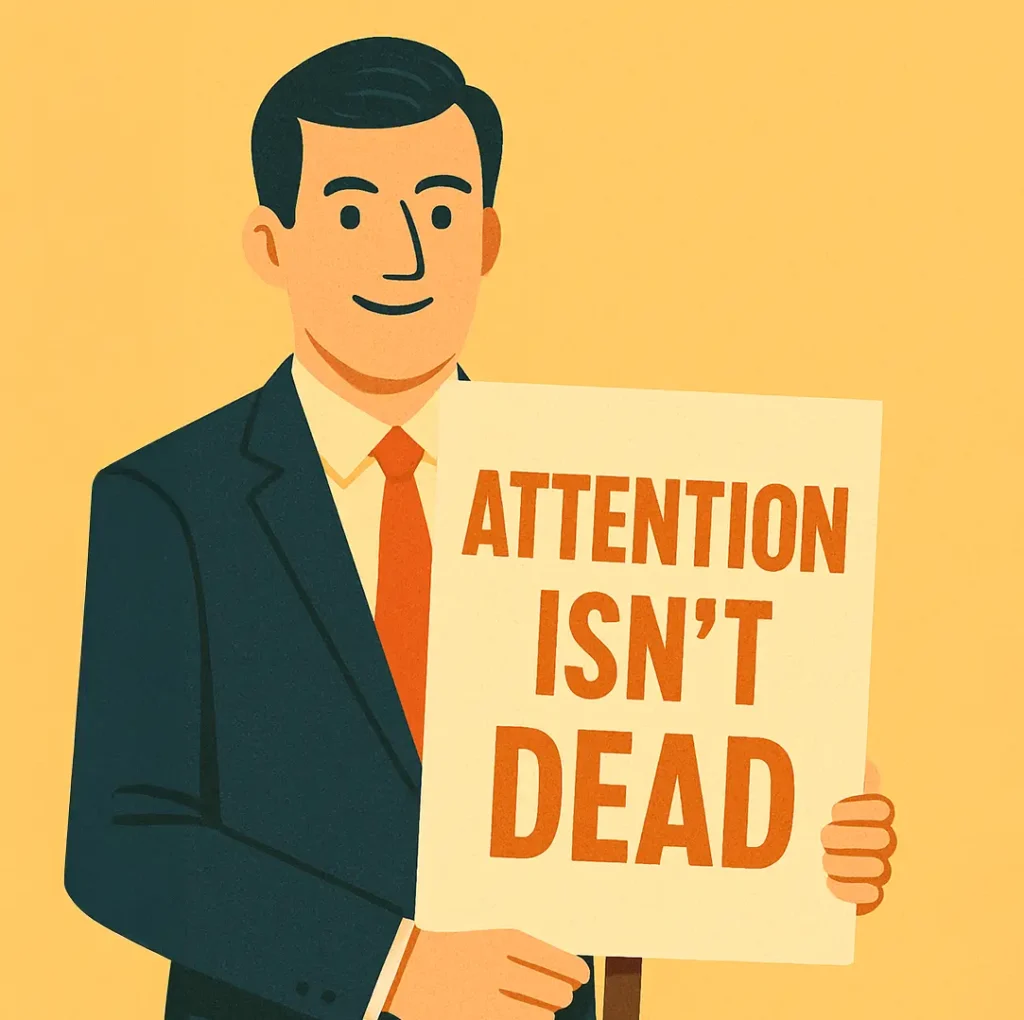
Attention isn’t dead — it’s simply pickier.
We love to say, “No one pays attention anymore.” But that’s not quite right. People watch entire shows in one night, listen to hour-long podcasts religiously, and spend weeks planning a perfect vacation, researching obsessively. The attention span is still there; it’s just reserved for things that feel worth it.
So what’s changed? Our filters. We’re bombarded with information every second—texts, emails, ads, memes, DMs, Reels, Slack pings, 3-second videos with flashing captions. Our brain has learned to swipe away anything that doesn’t feel immediately relevant. Attention hasn’t faded; it’s just more costly.
This has vast implications on how we communicate, as brands, creators, professionals, and even as humans in general.
The first 8 seconds are everything: Content Marketing Best Practices That Win Attention
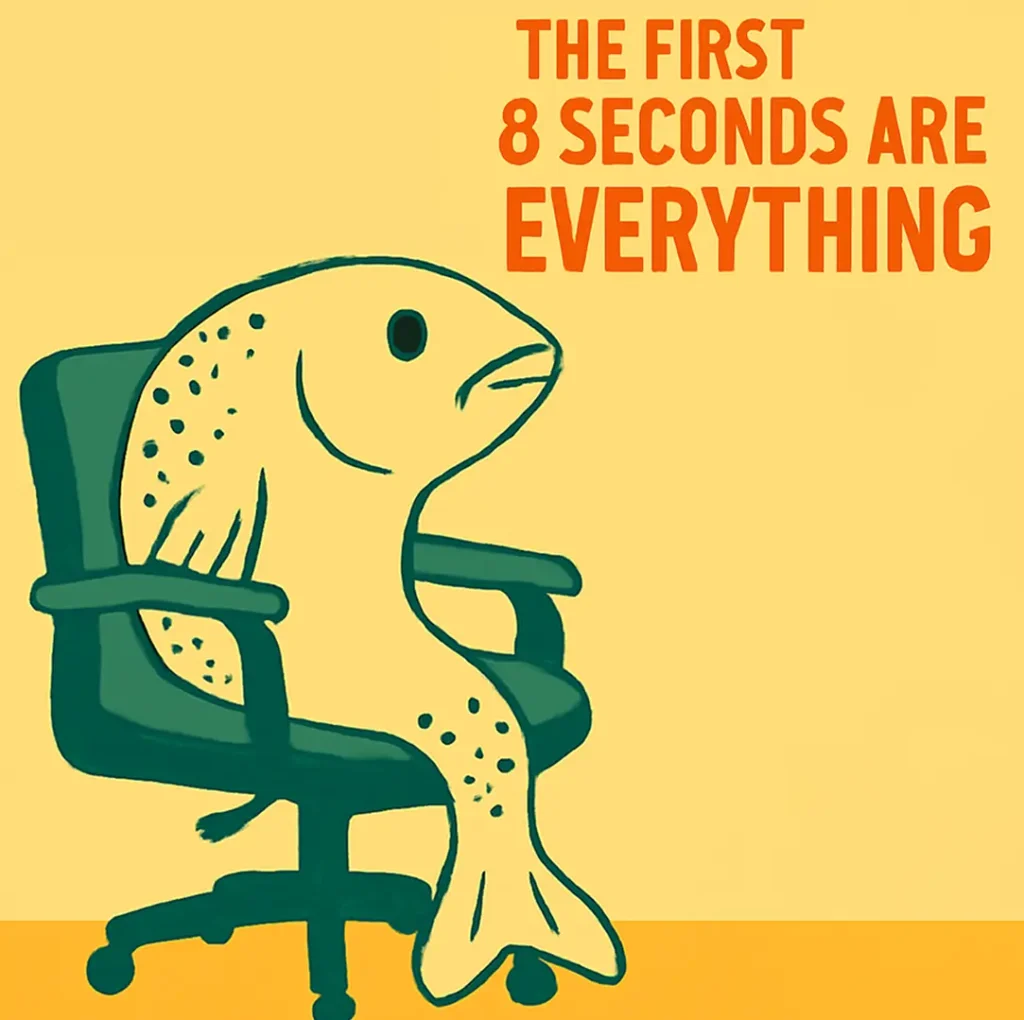
Whether you’re writing, designing, speaking, or marketing, the opening seconds are more than a starting point. They are a test. Nobody promises to read or watch something that “gets good later.” They commit because it starts strong — and fast.
That doesn’t mean you need to shout, exaggerate, or jump around like a TikTok character. It means you must immediately offer clarity, intrigue, and a sense of purpose. Show people that what you’re about to say will either give them something they want, answer a question they’ve been asking, or tell them something they didn’t know they needed. It’s not about being loud but being relevant.
Humans crave meaning, not just motion.
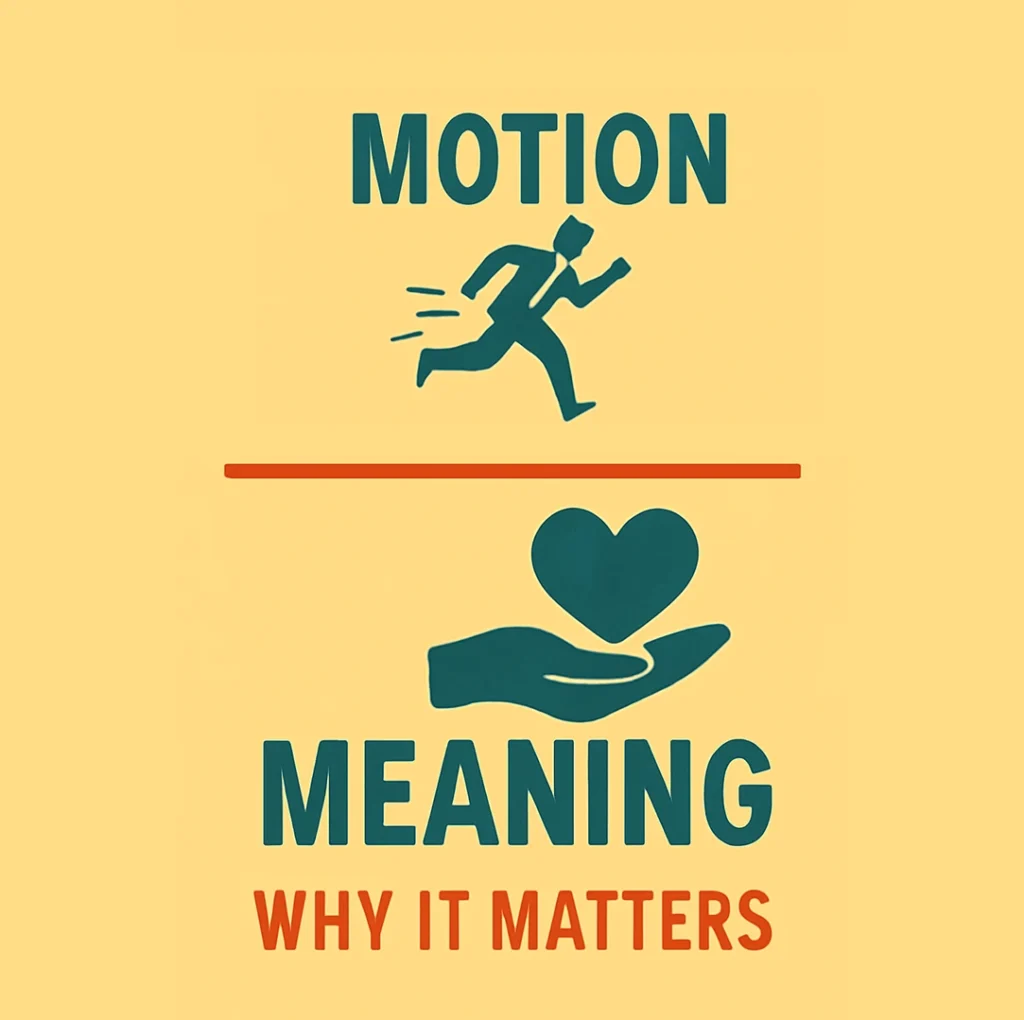
One of the paradoxes of the digital age is that while we’re more distracted than ever, we’re also more desperate for depth. People want to feel something. They’re starving for honesty, connection, humour, insight, anything that cuts through the chatter and feels real. That’s why a tweet can go viral for being brutally sincere, and why long-form newsletters are in vogue.
If you can offer people a brief moment of clarity, the tiniest bit of humor in the midst of seriousness, or simply something that doesn’t sound like it came from a content farm, you earn trust. And trust is the actual currency now, more than attention.
Understanding the Psychology Behind Attention
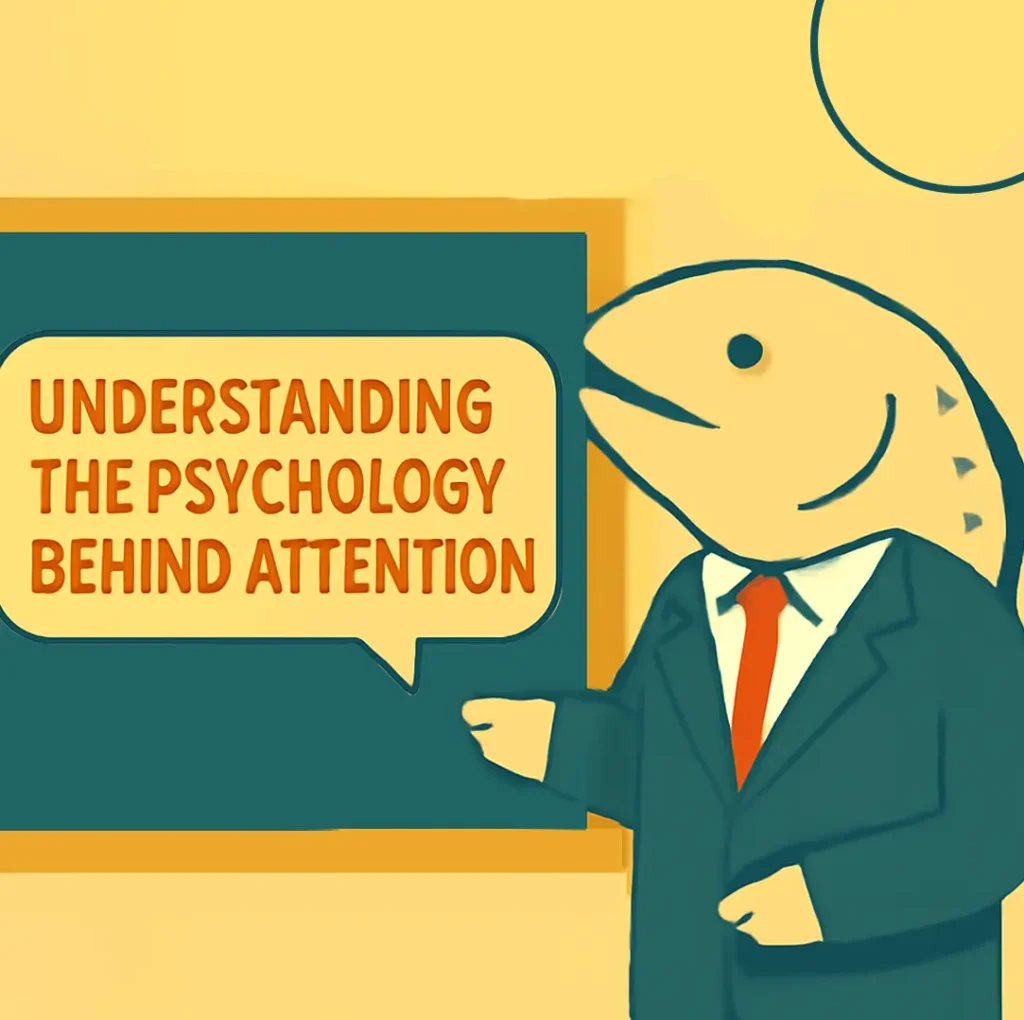
Shorter attention spans can’t be blamed on technology. It’s also connected to the brain’s response to the overwhelming amount of information available. The brain filters out irrelevant information to focus on what’s deemed necessary. Therefore, marketers must ensure their content is perceived as valuable and relevant.
Welcome to the Scroll Wars: Digital Marketing Tips For Capturing Attention in Seconds
In the battlefield of modern marketing, you’ve got your audience’s attention for the time it takes to sneeze. Eight seconds. That’s your window, your one shot at relevance. And the competition? Oh, just every meme, cat video, notification, and sponsored ad in existence.
So, how do you cut through the cacophony? Here’s how — not the boring, run-of-the-mill way.
1. Headlines That Grab

Your headline isn’t a brief. It’s a trap. It’s the pause that refreshes the scroll. Don’t just write what the content is; write what it does for the reader. Add emotion, curiosity, maybe even a little sass.
Bad: “5 Email Marketing Tips”
Better: “Your Emails Are Probably Terrible — Here’s How to Fix Them”
2. Visuals Speak Louder Than… Basically Everything

Your readers skim more than they read, so use images to communicate ideas and separate long text blocks. Utilize loud colors, emojis, gifs, and infographics whenever applicable.
3. Think Mobile First, Desktop Never
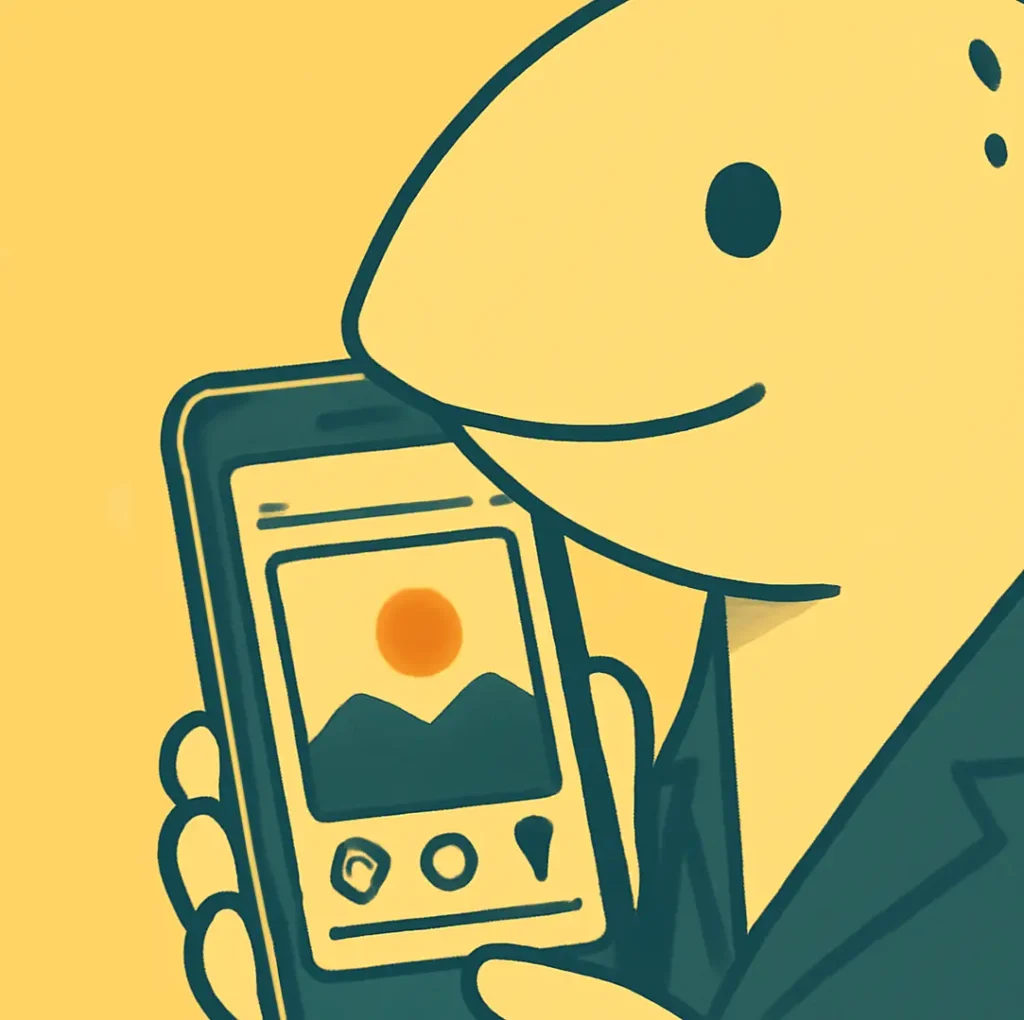
If your content doesn’t look good on a phone, you may as well be invisible. Mobile is your primary platform, so keep headlines clear and paragraphs short and easy to read. Also, ensure that your call-to-action buttons are easy to tap.
4. Go Short, or Be Worth the Scroll

People aren’t averse to long content; they’re averse to long and pointless content. Short-form videos, such as those on TikTok, Reels, or Shorts, work because they provide users with fast and compelling value. Long-form content can also be successful, as long as it’s valuable and to the point. But long-form works too, if it actually delivers something valuable.
A rule of thumb is to either get to the point fast or be so good that people forget they’re still scrolling.
5. Give ‘Em Something to Do
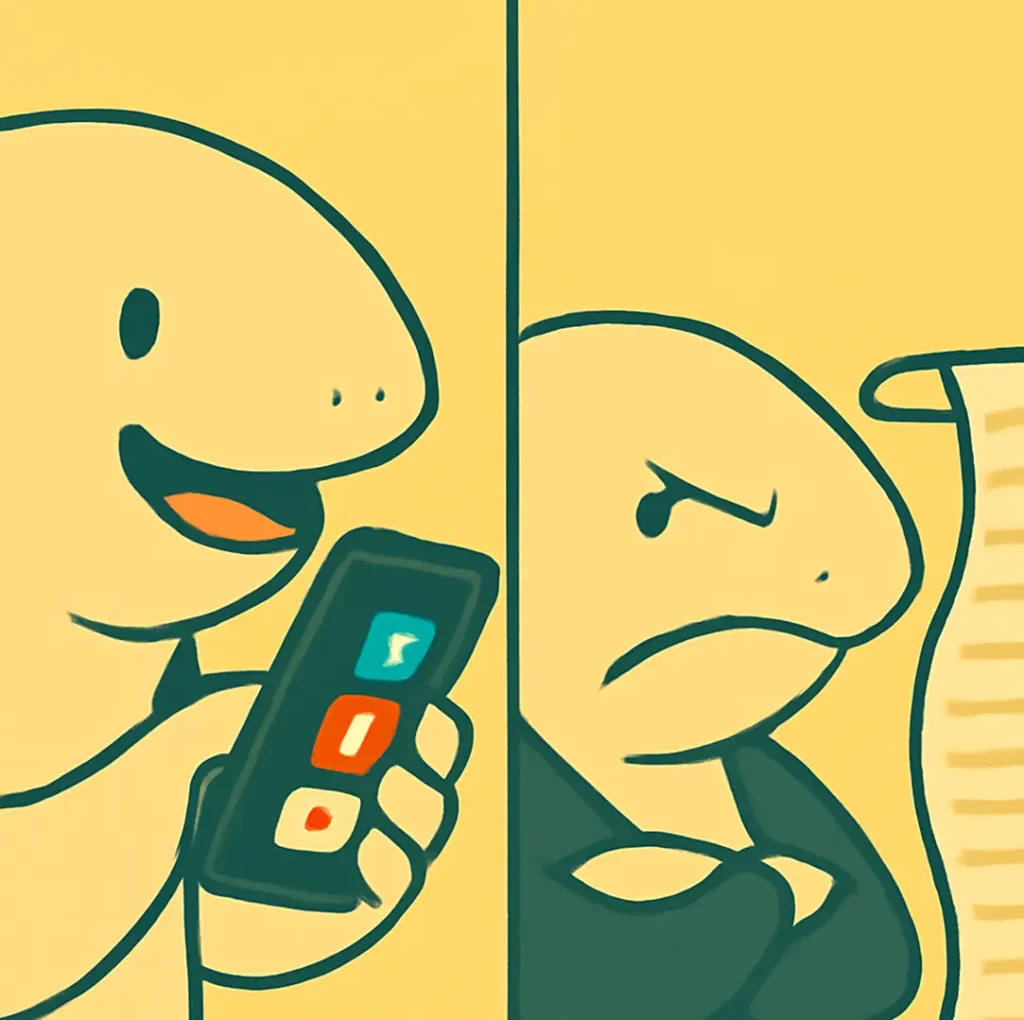
Interactive material is a lot more interesting than passive material. Quizzes, polls, sliders, and swipe-through stories: They’re not only fun but also encourage people to engage. Passive content often gets overlooked, while interactive content will be remembered.
6. Clarity Over Cleverness (Most of the Time)
Clever copy is supersmart, but not when it leaves your potential customers wondering what you’re actually selling. Before you get fancy, ensure your content is clear and understandable. Save the metaphors for after you’ve communicated the value. Remember that confused people don’t convert. They just close the tab.
If this made you go ‘wow,’ you’ll definitely enjoy exploring The Zeigarnik Effect: Why Consumers Crave The Unfinished and How J.Lo’s Dress Changed Visual Search Forever.
FAQs on Attention Span & Marketing
Q1: What is the average human attention span today?
A: Research shows that the average human attention span has dropped to just eight seconds — shorter than a goldfish’s. This doesn’t mean attention is gone; it’s just more selective and reserved for things that feel worth it.
Q2: Why is attention span getting shorter in the digital age?
A: We live in the noisiest era of human history. Our phones, notifications, ads, and constant information overload force the brain to filter out irrelevant content quickly. This creates a fragmented focus, making deep engagement harder to achieve.
Q3: How has multitasking affected our attention span?
A. In our frantic obsession with multitasking, we’ve traded deep engagement for scattered attention. With distractions on the rise, creating opportunities for genuine interaction and deep focus is becoming harder and harder.
Q4: How do you write headlines that grab attention?
A: A headline should stop the scroll, not just state the topic. Write what the content does for the reader, add curiosity or emotion, and make it irresistible — for example, turn “5 Email Marketing Tips” into “Your Emails Are Probably Terrible — Here’s How to Fix Them.”
Q5: Why are visuals important in content marketing?
A: Readers skim more than they read, so visuals like images, gifs, emojis, and infographics help communicate ideas quickly and break up long text blocks, making content more engaging.
Q6: What’s the secret to keeping people engaged with content?
A: Either get to the point quickly or make your content so good that people forget they’re still scrolling. Value and relevance matter more than length.
Q7: Why is clarity more important than cleverness in marketing copy?
A: Clever copy can confuse customers if it’s not clear about what you’re selling. Communicate value first — because confused people don’t convert, they just close the tab.
Leave a Reply
Your email address will not be published. Required fields are marked *












Comments